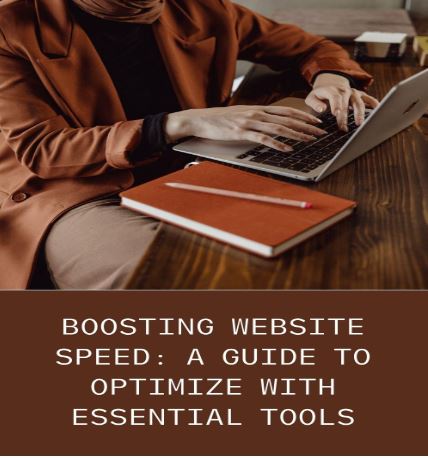
Boosting Website Speed: A Guide to Optimize with Essential Tools
Introduction
In today’s fast-paced digital world, the speed of your website can make or break its success.
Slow-loading pages can lead to frustrated visitors, higher bounce rates, and even a drop in search engine rankings.
Fortunately, there are various tools and techniques available to help you optimize your website’s speed.
In this article, we’ll explore how to enhance your site’s performance by utilizing different tools and best practices.

Website Speed Analysis Tools
Before you can optimize your website, you need to identify areas that need improvement. Several online tools can help you analyze your website’s speed and provide valuable insights. Some popular options include Google Page Speed Insights, GTmetrix, Pingdom, and Webpage Test. These tools generate reports highlighting issues like large image files, render-blocking scripts, and server response times.
Content Delivery Networks (CDNs)
Content Delivery Networks are an excellent way to distribute your website’s content across multiple servers worldwide.
CDNs, such as Cloud flare Akamai, and Amazon Cloud Front, cache and serve your site’s assets (like images, stylesheets, and scripts) from servers geographically closer to your visitors.
This reduces latency and accelerates page loading times, particularly for users located far from your server’s location.
Image Compression Tools
Images are often the largest files on a website and can significantly impact load times.
To optimize them, consider using image compression tools like TinyPNG, Compressor.io, or Adobe Photoshop’s built-in optimization features.
These tools reduce image file sizes without significantly compromising quality, resulting in faster page loading times.
Browser Caching
Browser caching allows frequently used resources to be stored on a user’s device temporarily.
This means that on subsequent visits, these resources don’t need to be reloaded from the server, speeding up page loading times.
You can enable browser caching through your server’s configuration or by using caching plugins like WP Super Cache for WordPress websites.
Magnification and Compression
Magnification involves removing unnecessary characters and whitespace from your website’s HTML, CSS, and JavaScript files.
Additionally, you can compress these files to reduce their size further.
Tools like UglifyJS, CSSNano, and HTMLMinifier can help automate this process and improve load times by reducing the amount of data that needs to be transferred.
Lazy Loading
Lazy loading is a technique that defers the loading of non-critical resources (such as images or videos) until they become visible on the user’s screen.
This reduces the initial page load time and improves the perceived speed of your website.
Most modern content management systems (CMS) and JavaScript libraries offer lazy loading options, or you can implement it manually using the Intersection Observer API.
Content Management System (CMS) Optimization
If your website runs on a CMS like WordPress, ensure that you keep it updated, along with your themes and plugins.
Bloated or outdated code can slow down your site.
Additionally, consider using performance-focused themes and plugins, such as those recommended by Google’s Page Speed Insights.
Server and Hosting Optimization
Choose a reputable hosting provider that offers optimized servers for your specific needs.
VPS (Virtual Private Server) or dedicated hosting plans often provide better performance than shared hosting.
Also, ensure that your server configuration, such as PHP settings and server-side caching, is optimized for speed.
Monitoring and Continuous Improvement
Website optimization is an ongoing process.
Regularly monitor your site’s speed using the aforementioned tools and keep an eye on user feedback.
Continuously tweak and improve your website’s performance to maintain fast load times and a positive user experience.
Conclusion
Optimizing your website’s speed is essential for attracting and retaining visitors in today’s digital landscape.
By utilizing tools and implementing best practices like those mentioned in this article, you can enhance your site’s performance, reduce bounce rates, and improve your search engine rankings.
Remember that website speed optimization is an ongoing effort, so regularly review and refine your strategies to ensure a fast and efficient online presence.



